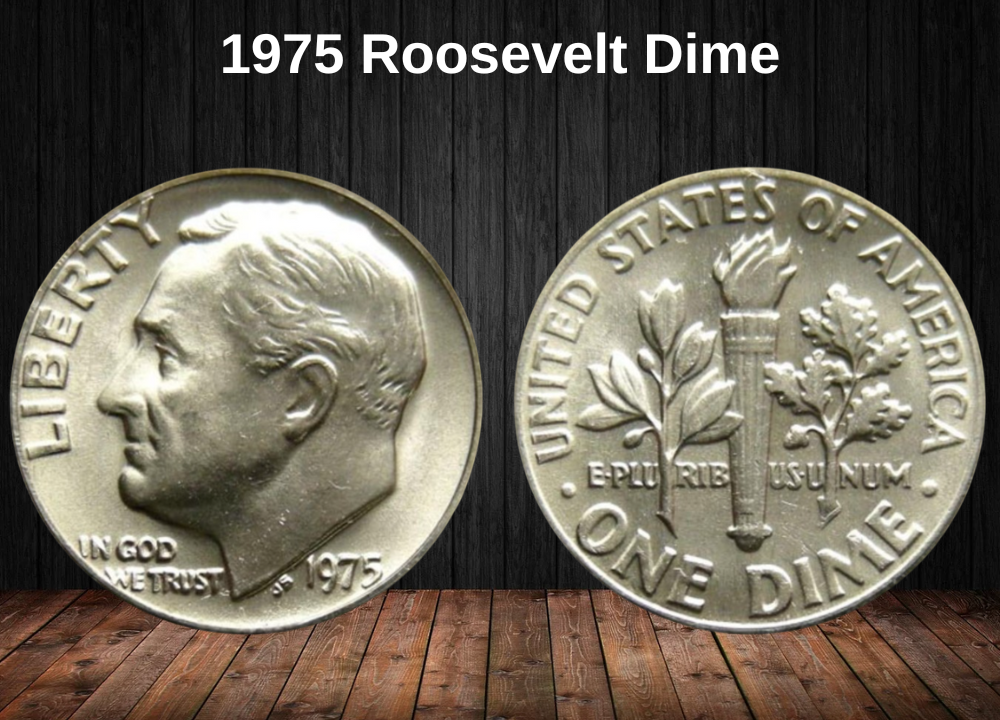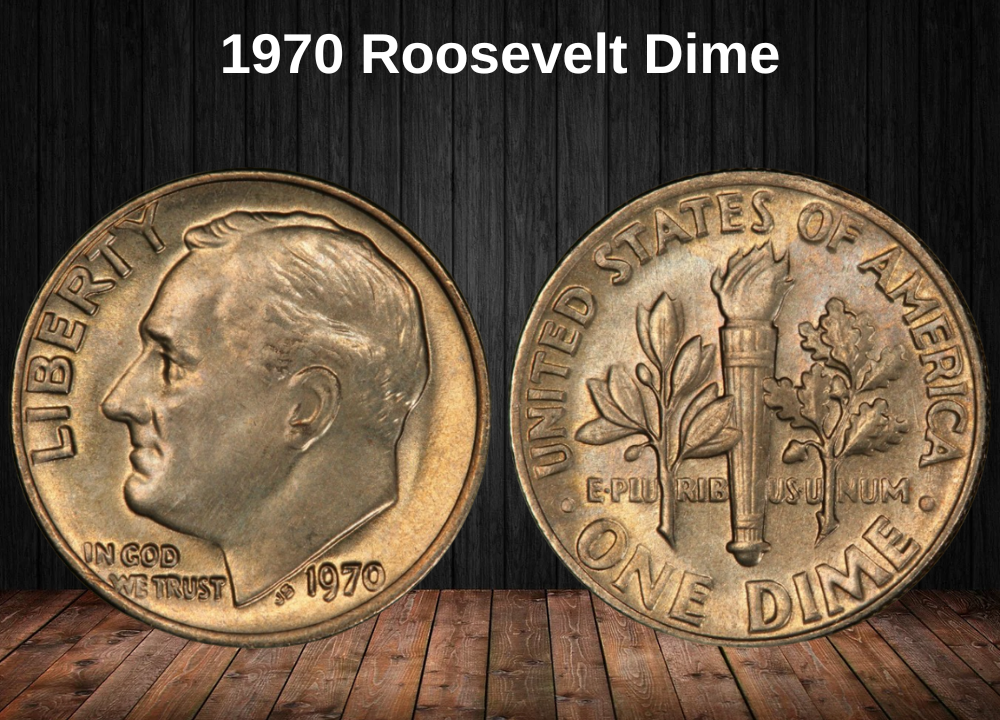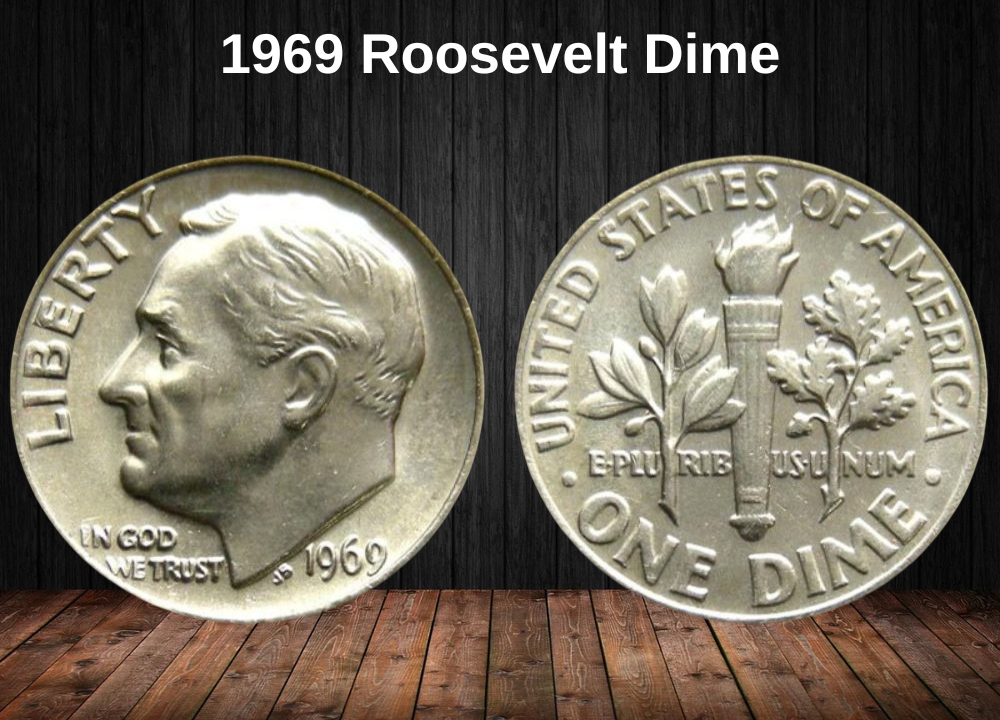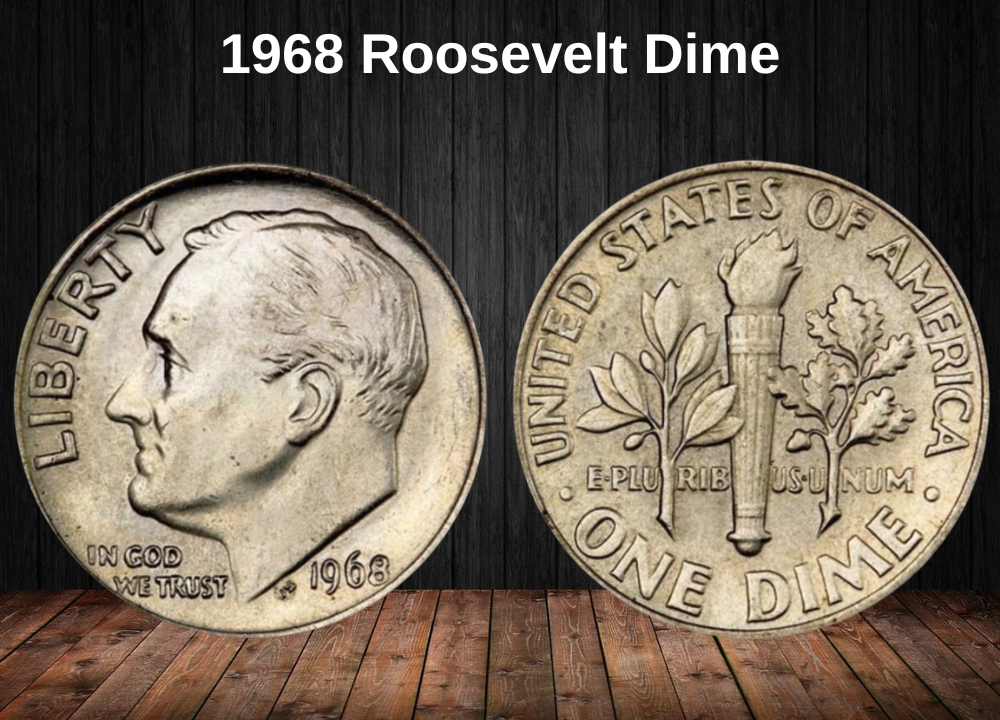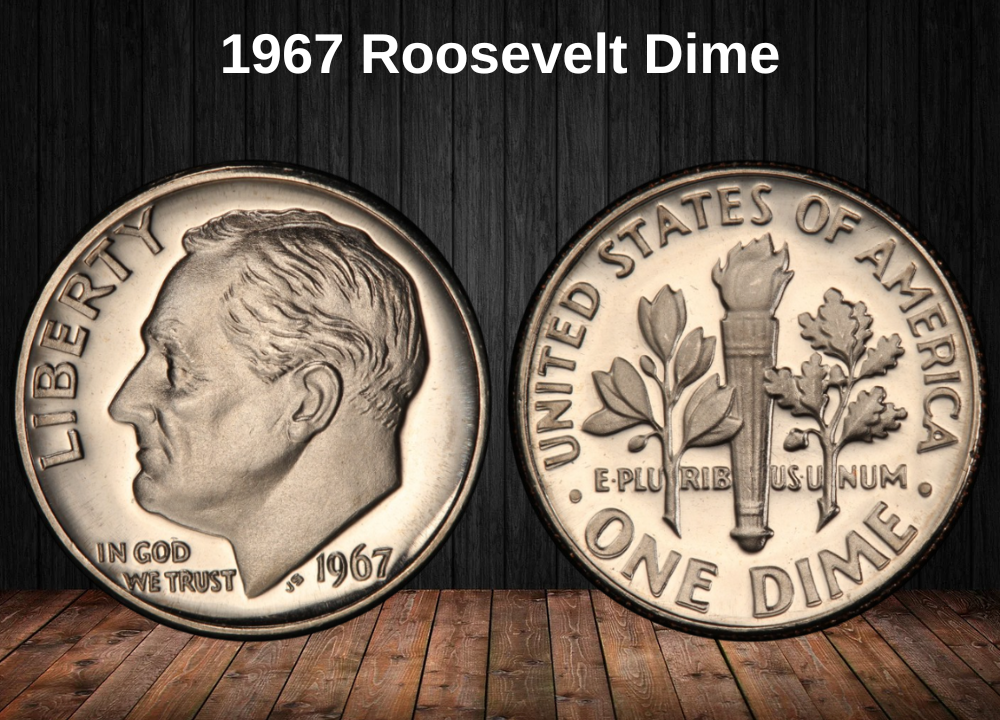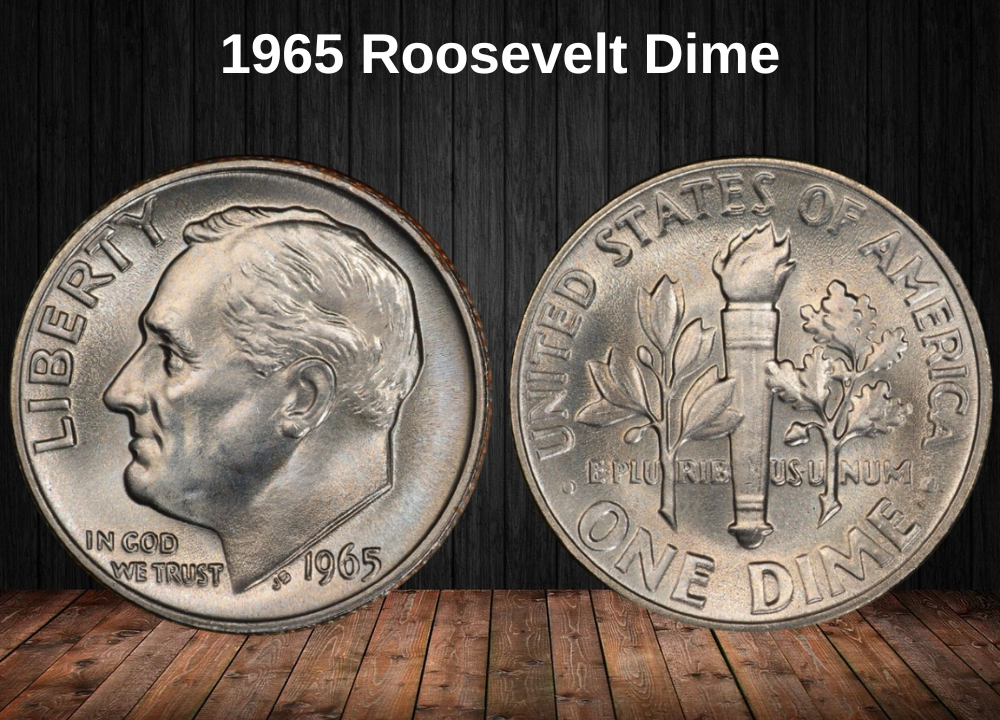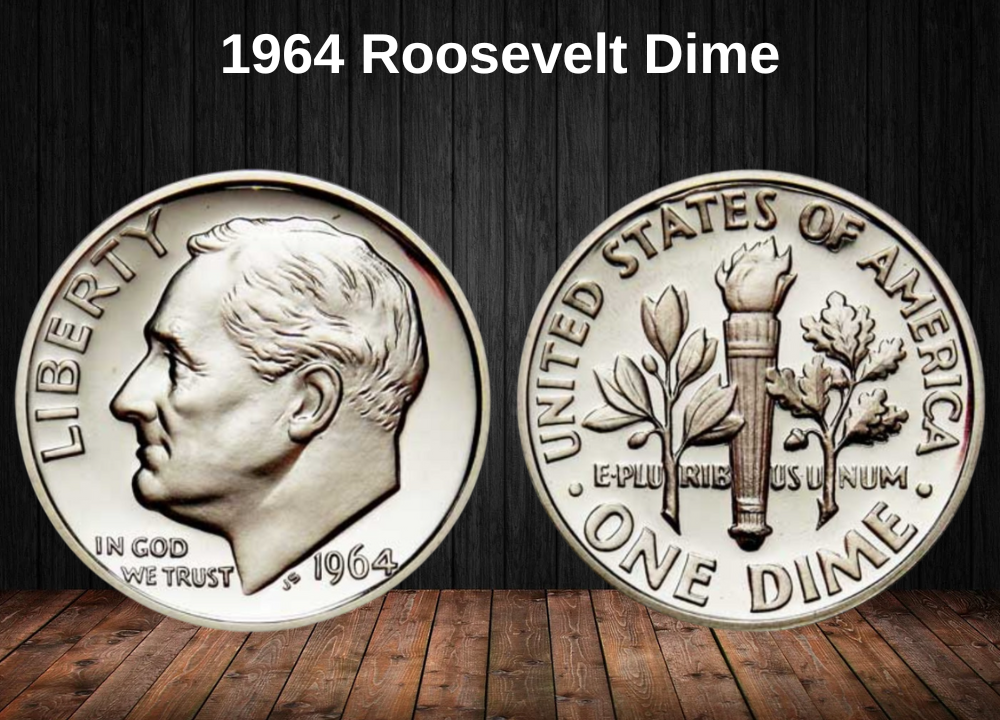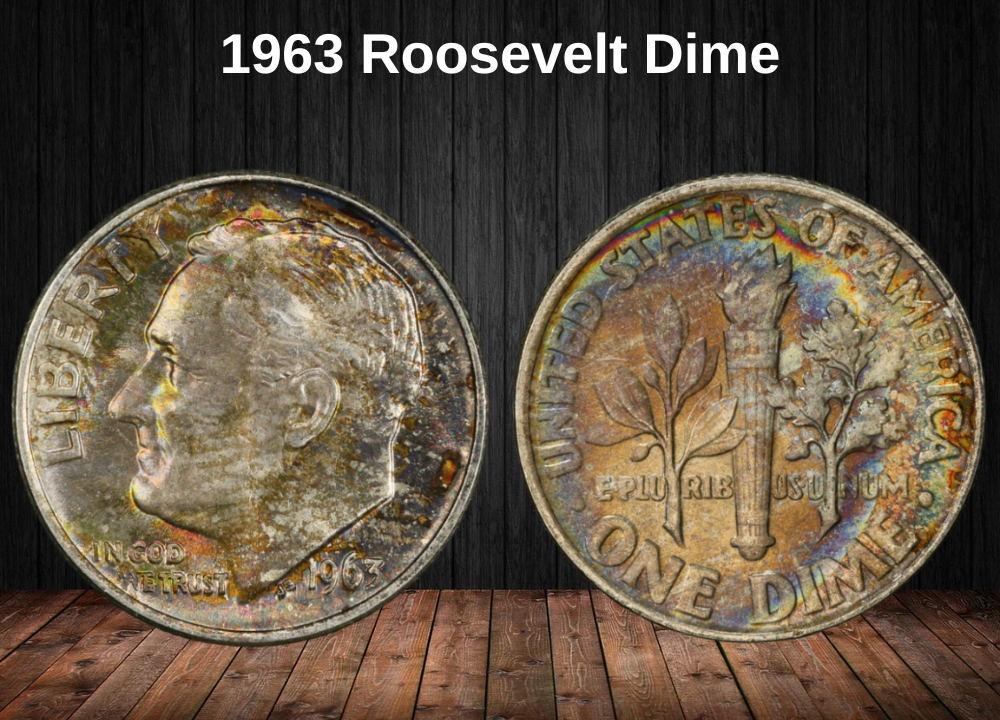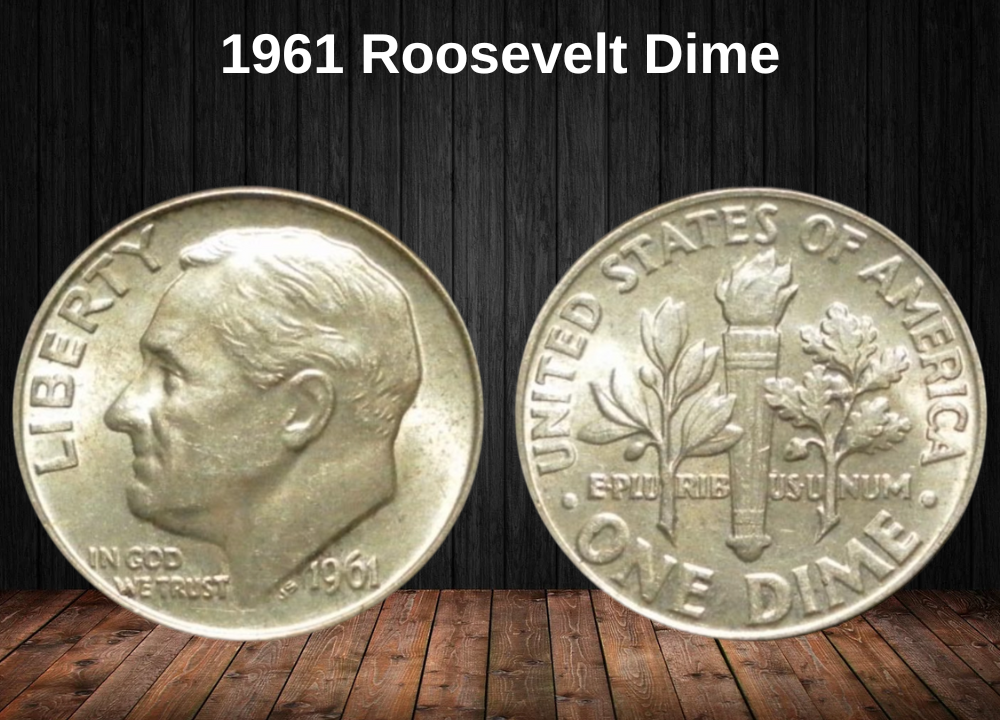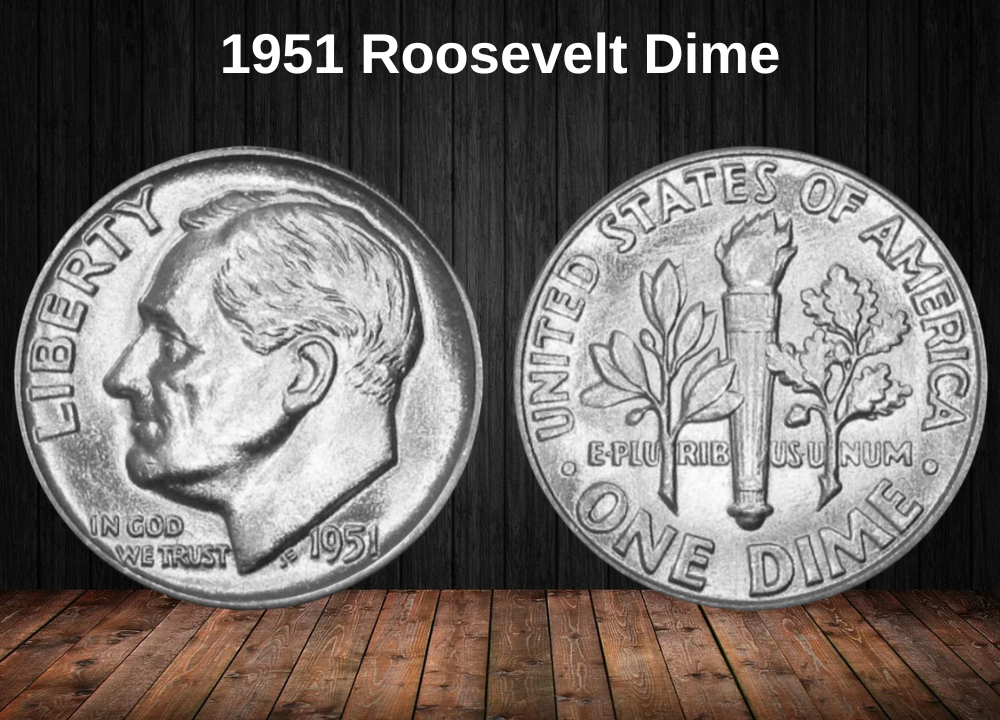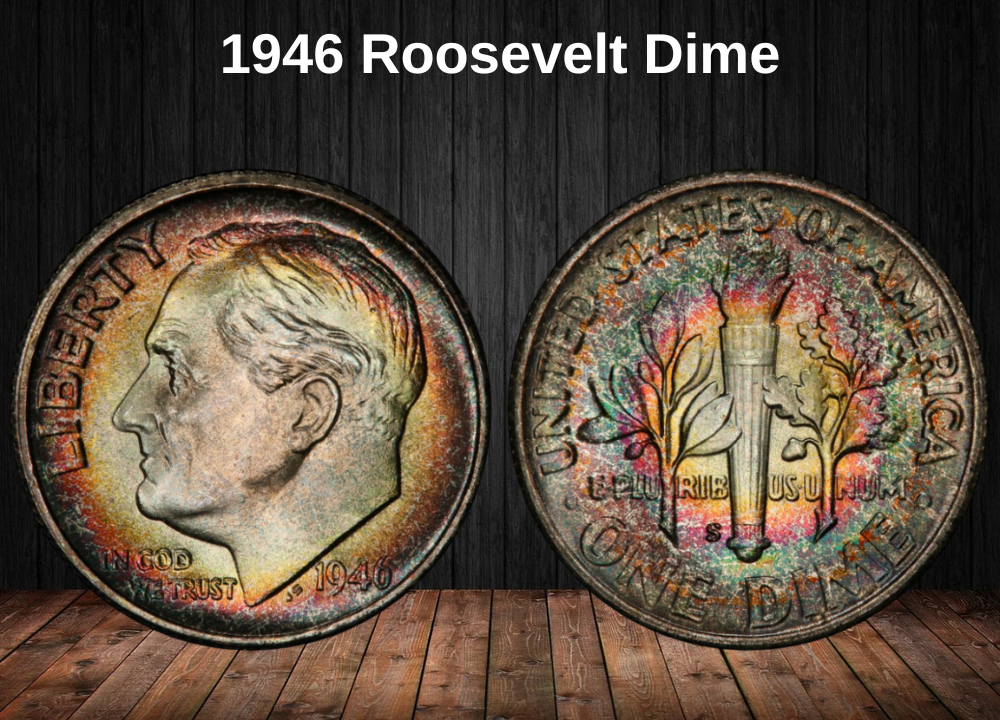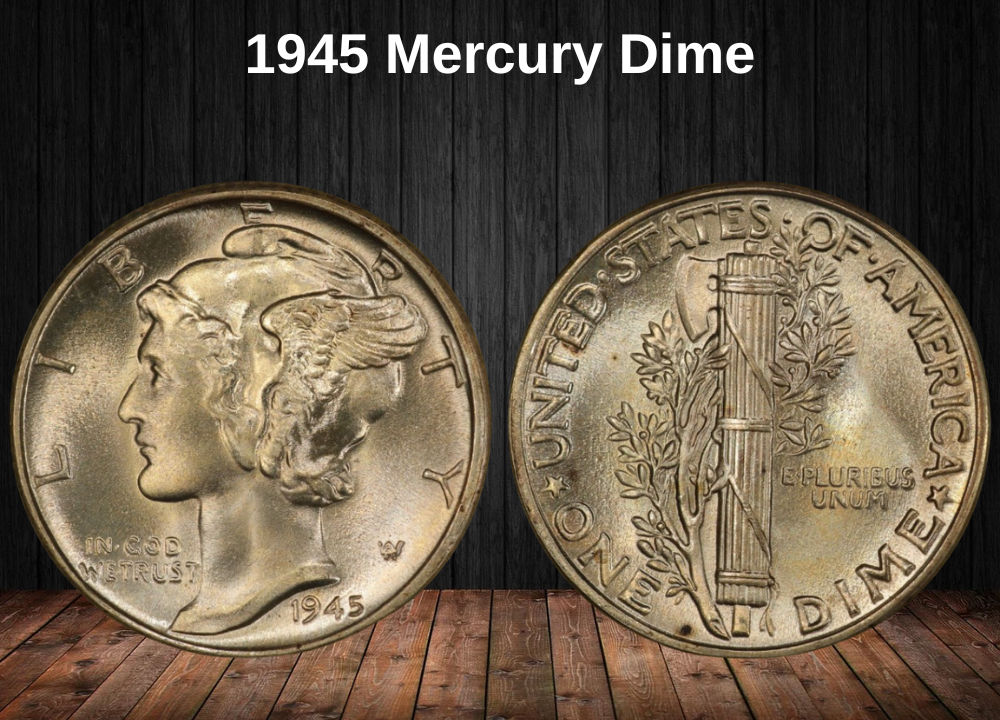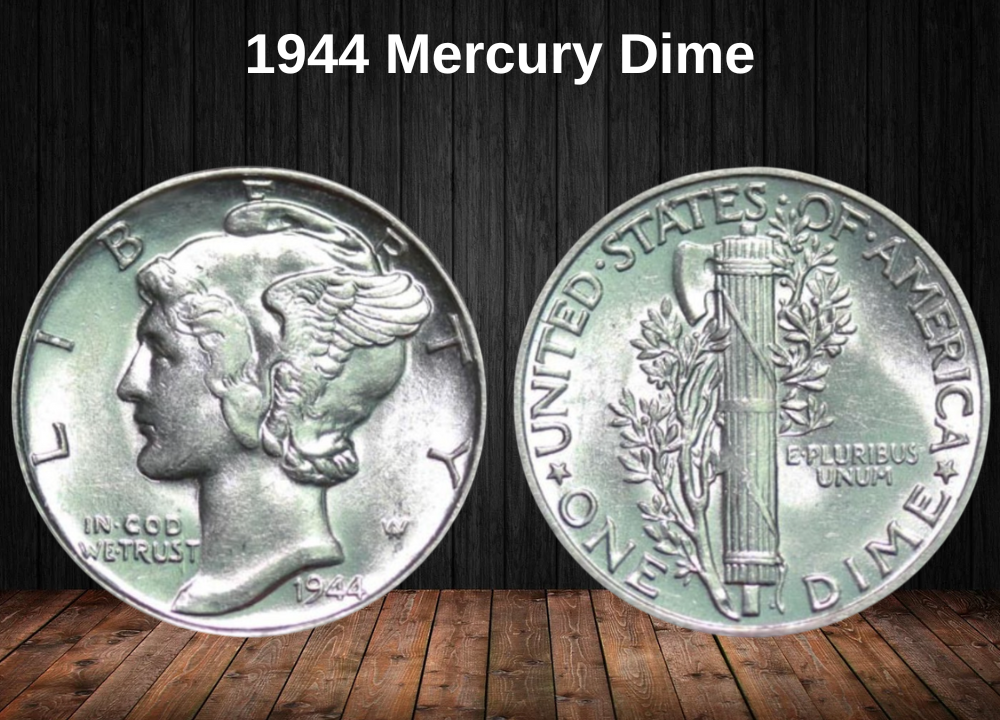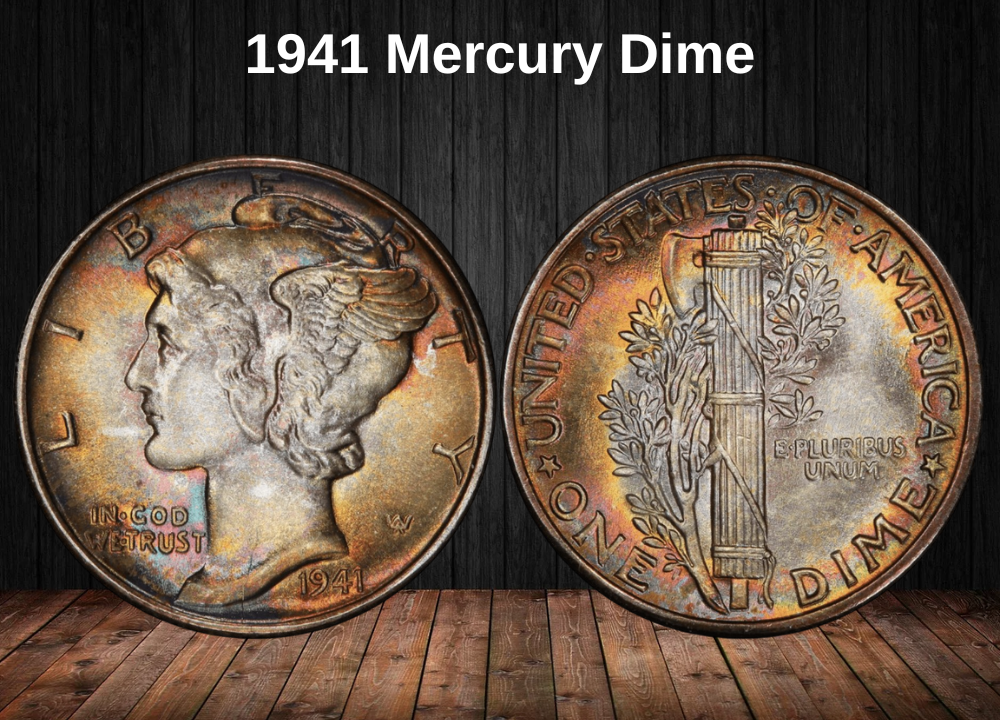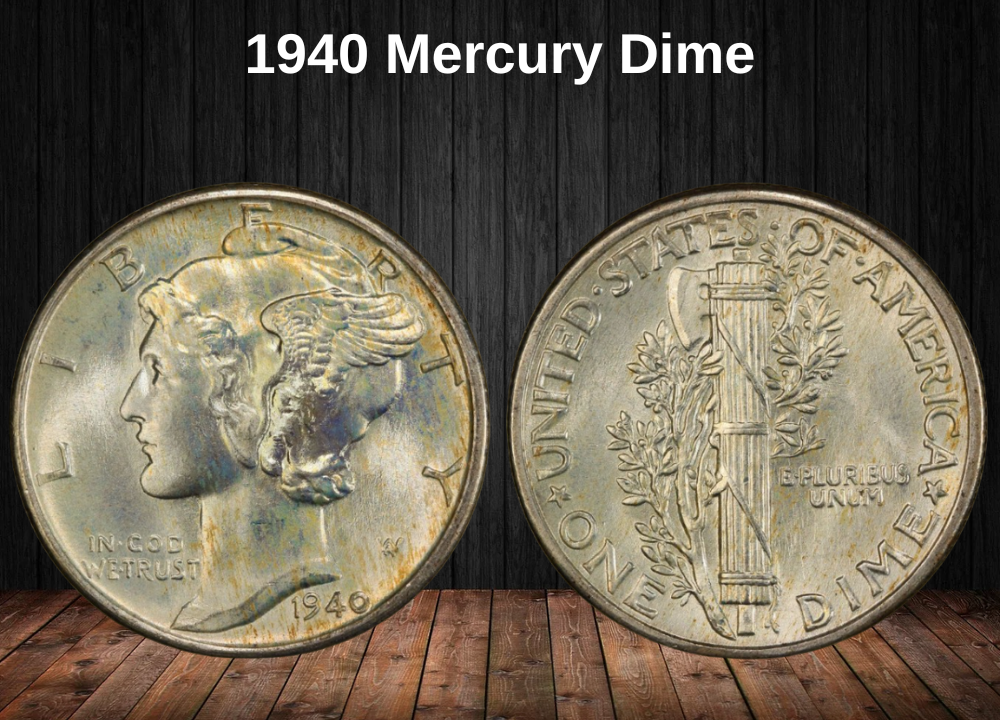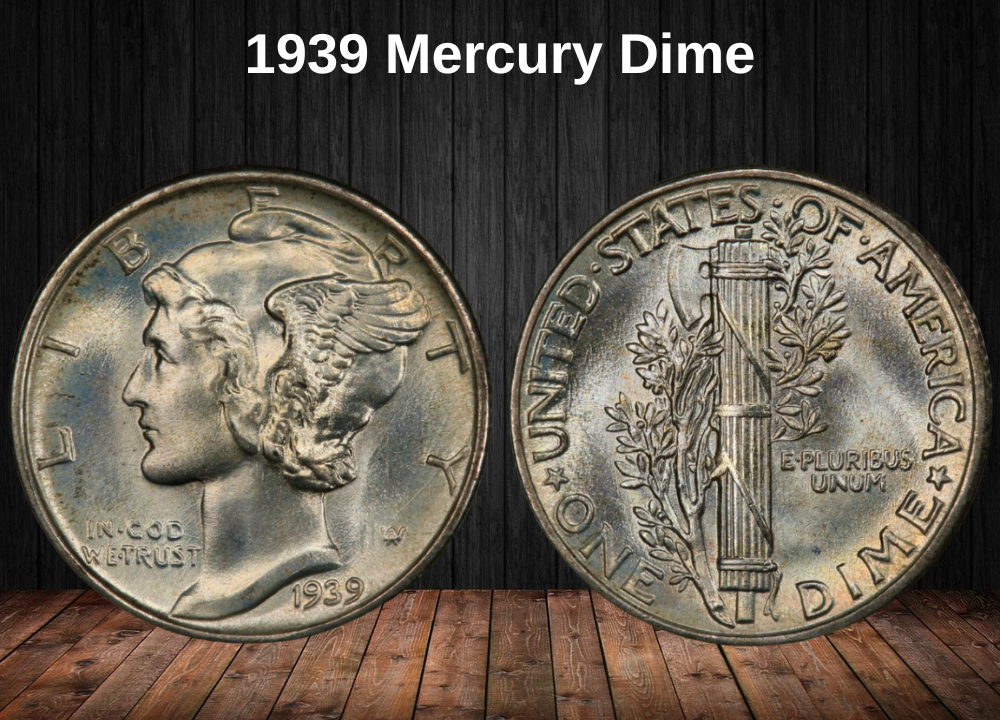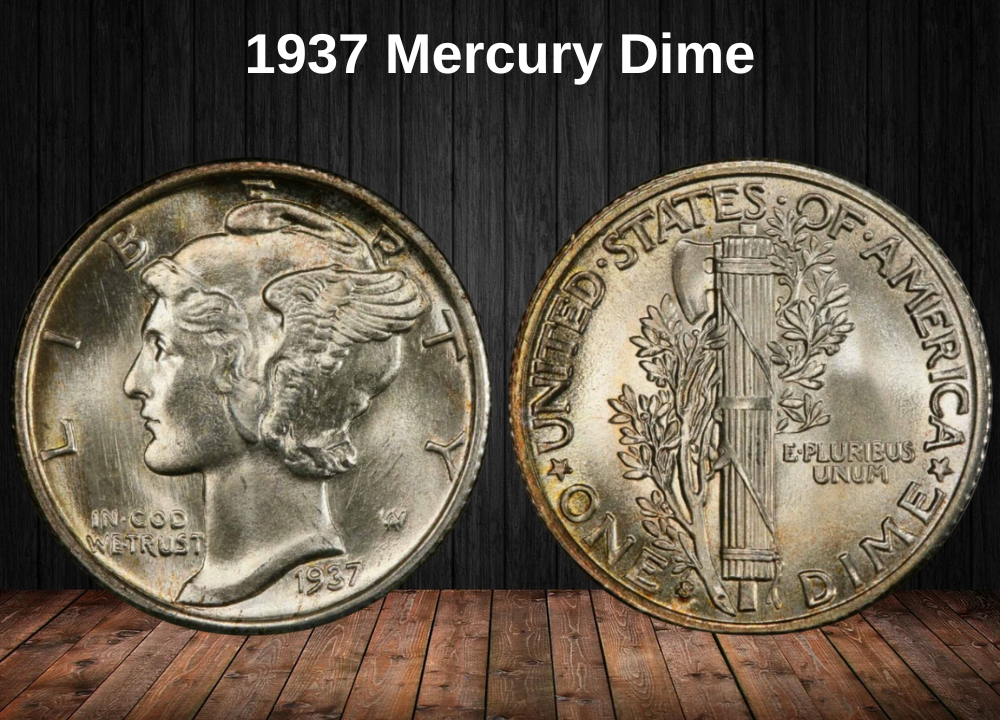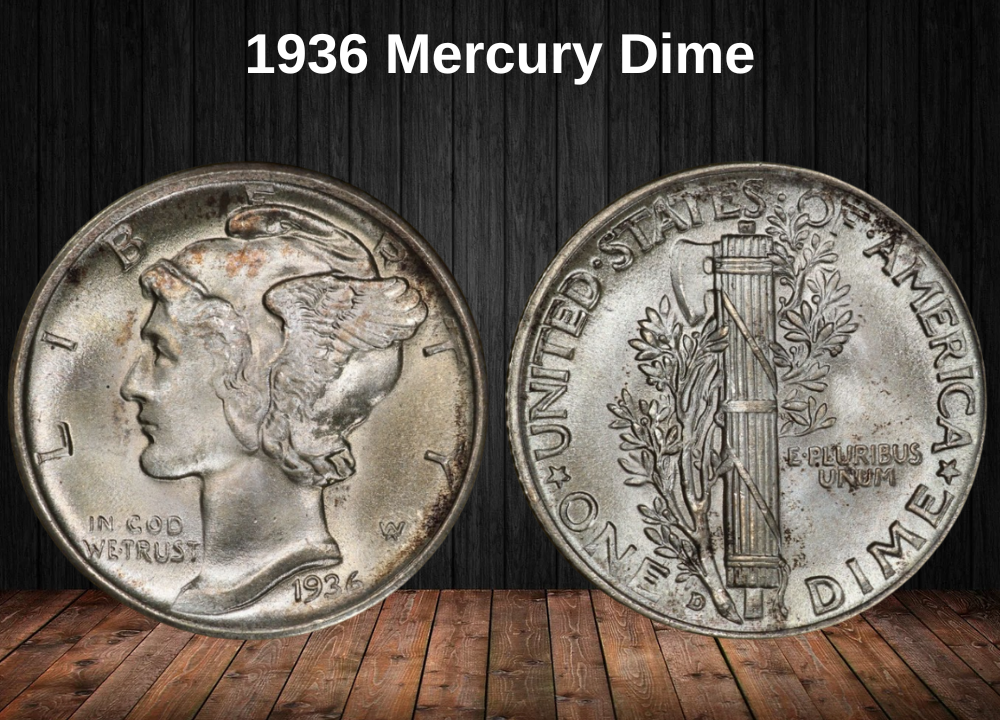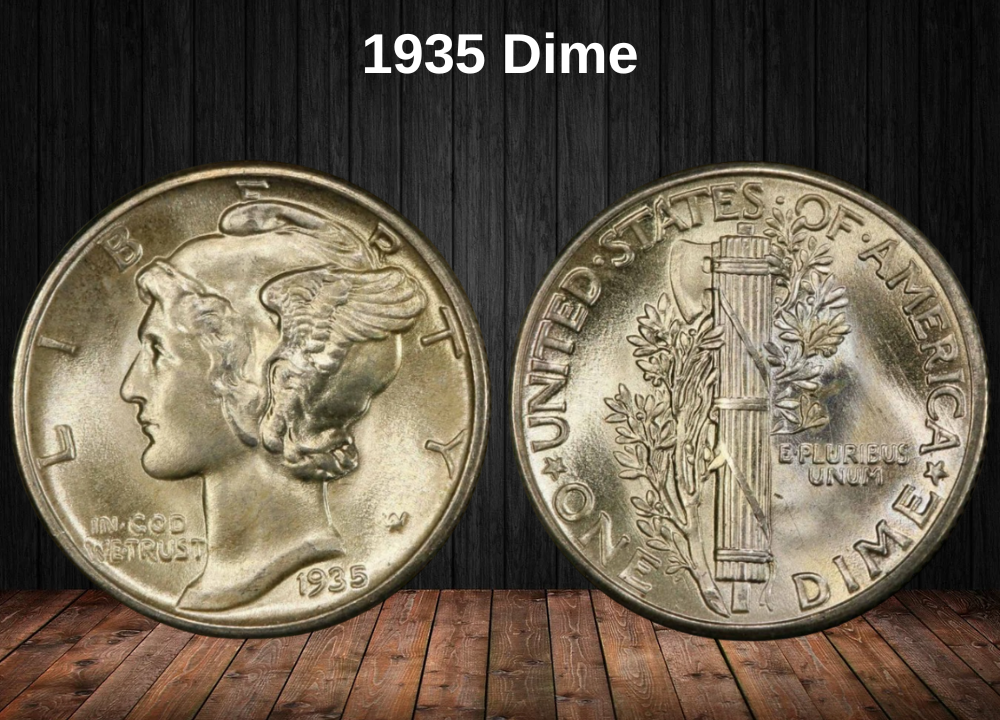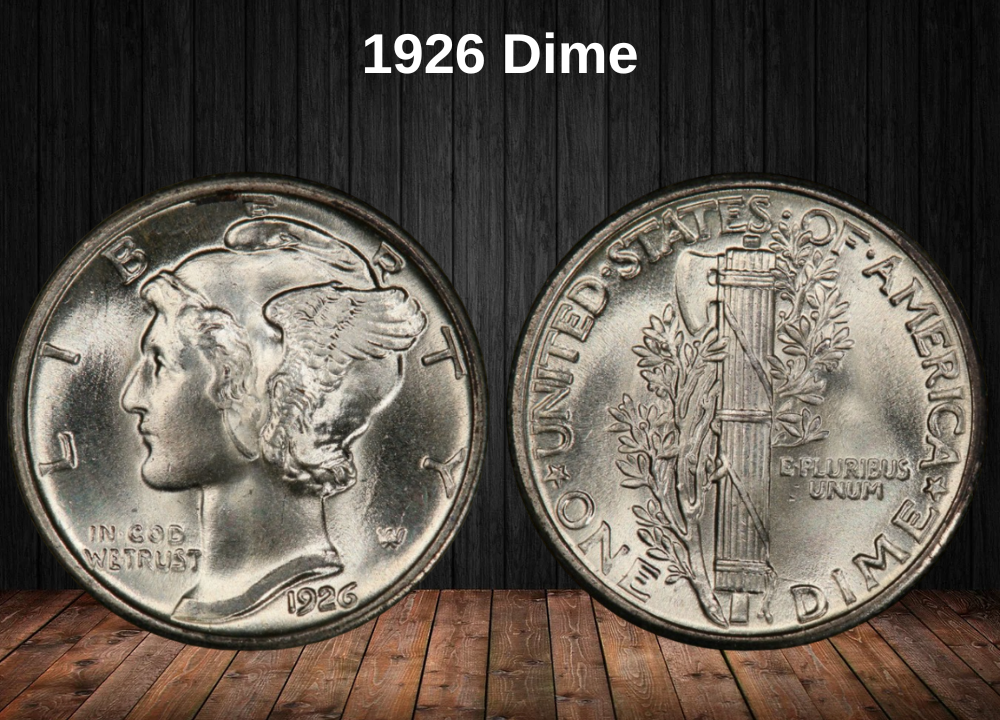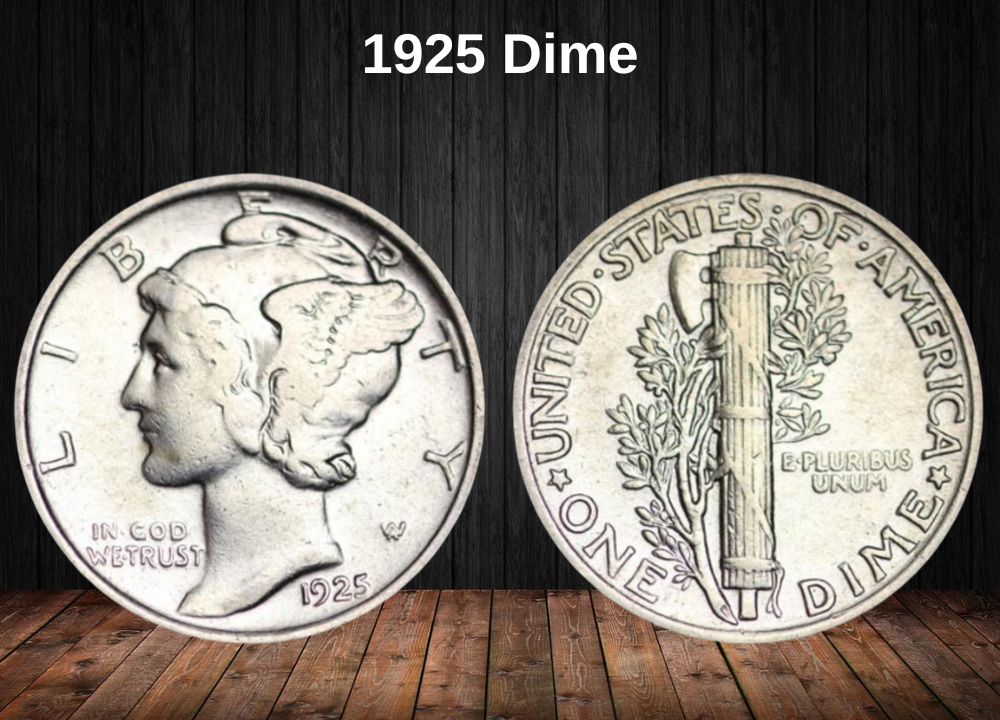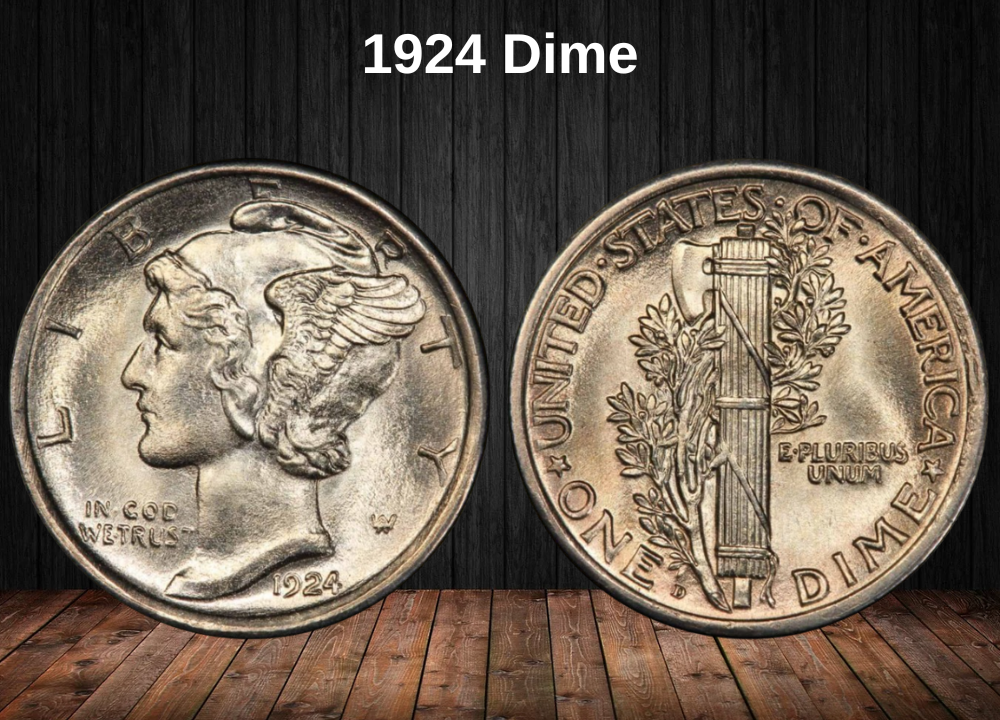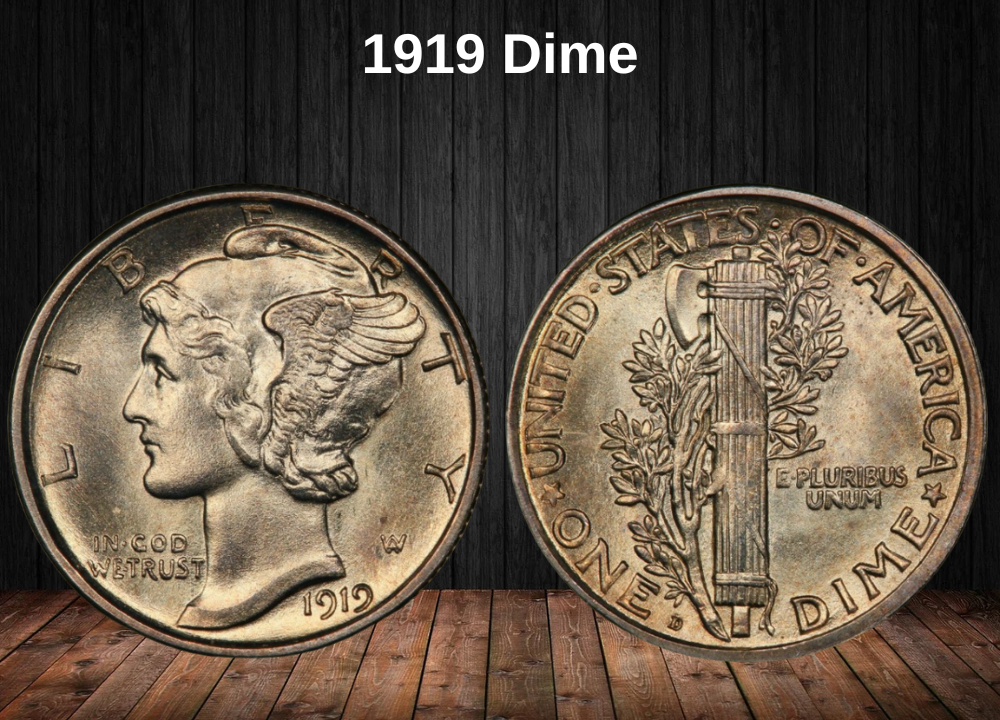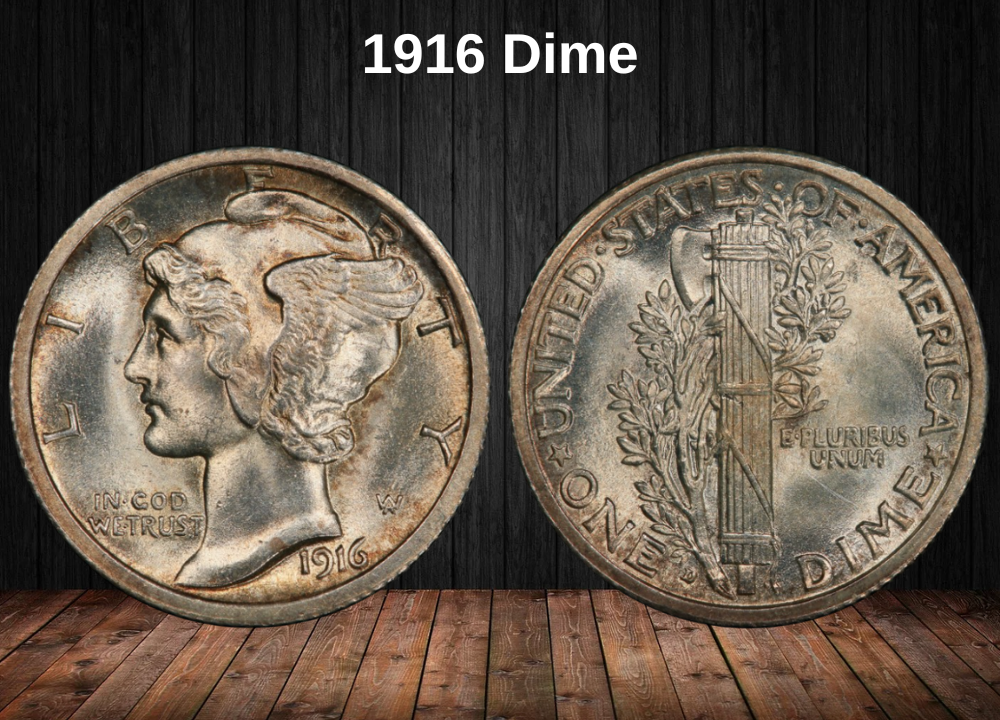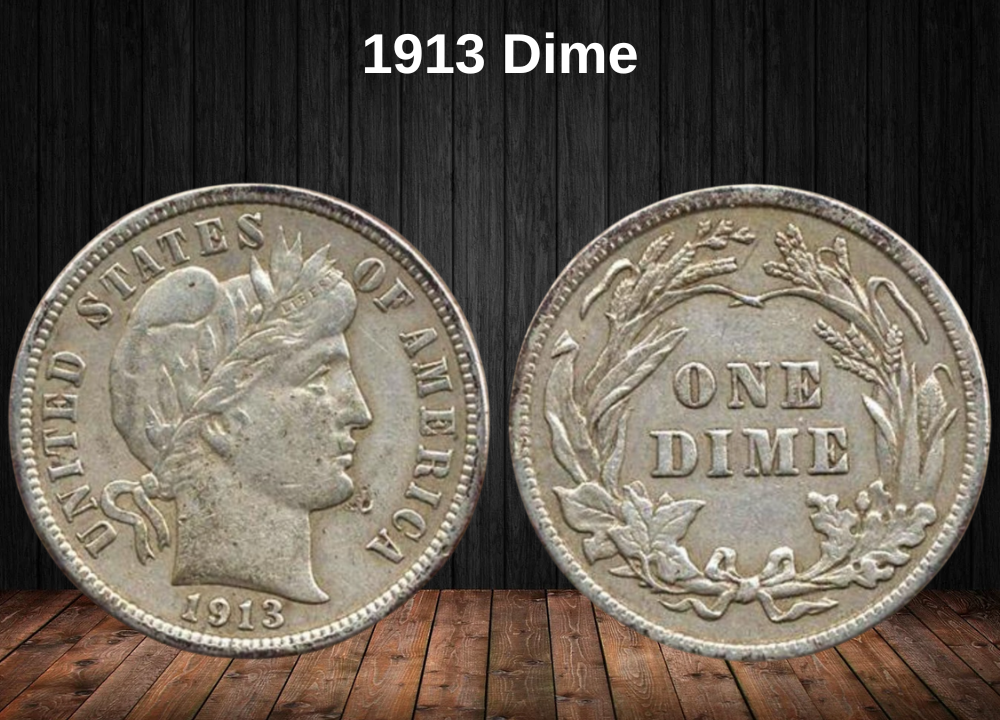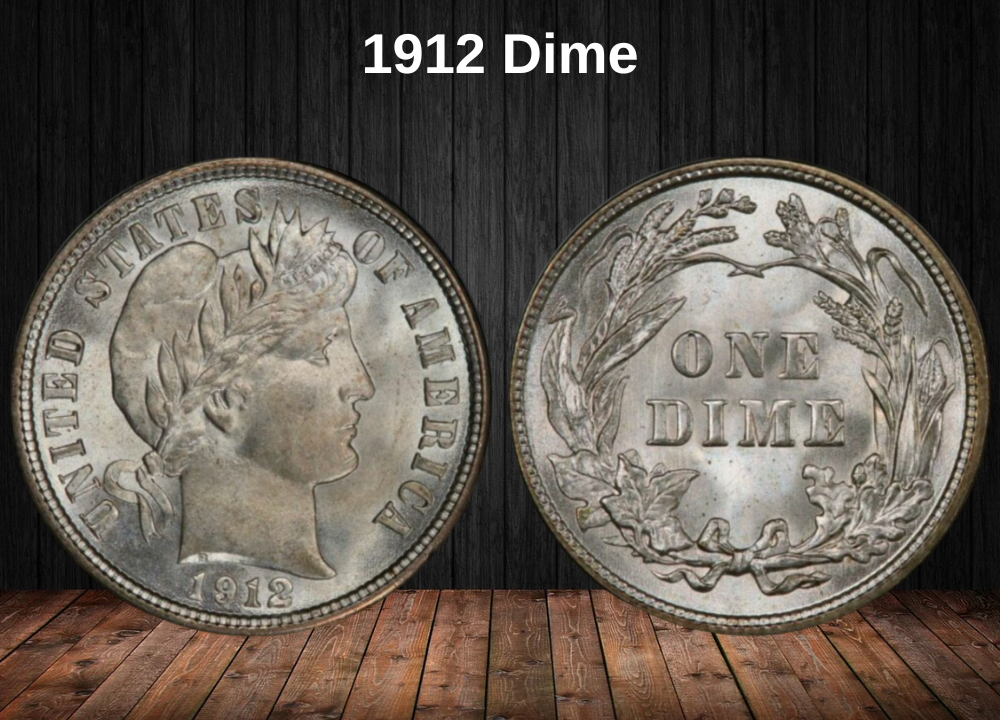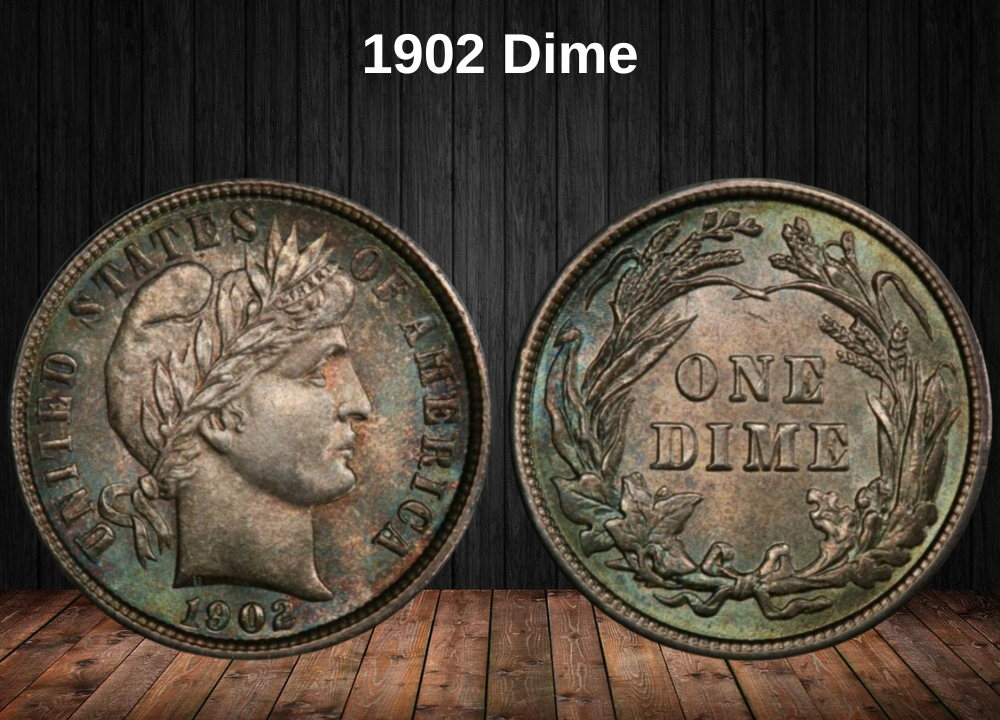The 1943 Mercury dime is one of the most recognizable U.S. silver coins from World War II. Collectors prize these dimes for both their beauty and their silver content, but their value depends on mint mark, condition, and special features like “Full Bands.”
Let’s break down everything you need to know about the 1943 Mercury dime value, its history, features, and rare errors that can make one coin worth thousands of dollars.
1943 Mercury Dime Value Chart
| Mint Mark | XF45 | MS60 | MS65 | MS68 |
|---|---|---|---|---|
| 1943 (P) No Mint Mark | $5 | $12 | $53 Full Band: $68 | $450 Full Band: $7,250 |
| 1943 D | $5 | $12 Full Band: $15 | $53 Full Band: $68 | $1,150 Full Band: $1,300 |
| 1943 S | $5 | $12 | $53 Full Band: $100 | $950 Full Band: $4,000 Prooflike: $1,000 |
History of the 1943 Mercury Dime
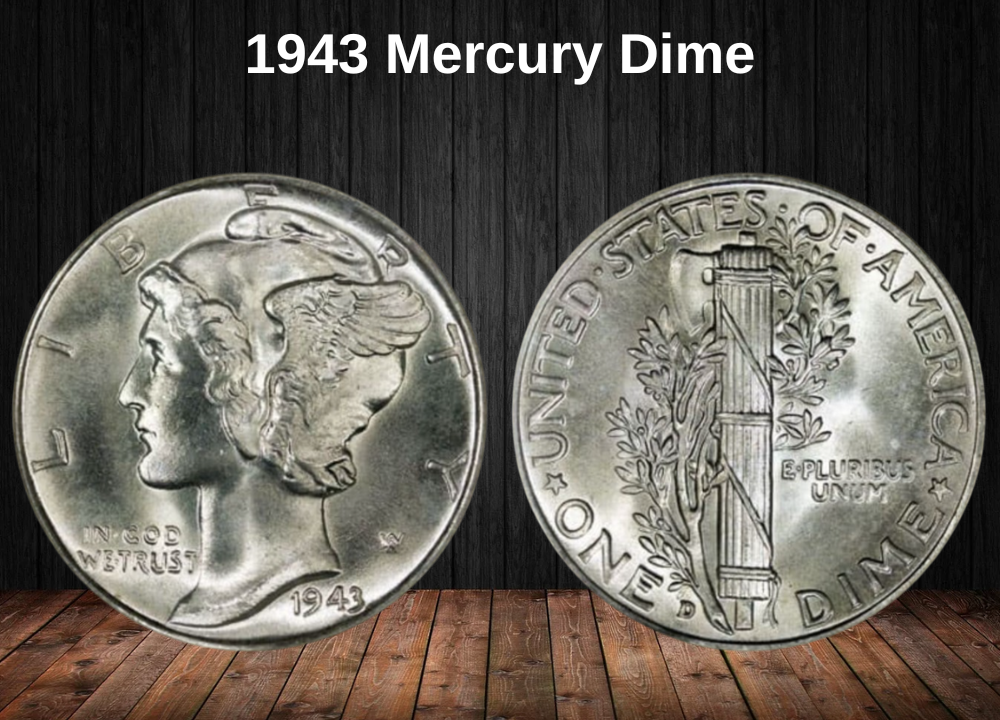
The 1943 ten-cent coin continued the beloved series that had begun in 1916. That year saw the launch of the so-called “Mercury dime”, a nickname that stuck because of the figure on the obverse. However, the name is actually a misnomer — the portrait is not of the Roman god Mercury.
Although the design features a winged cap, the face is clearly that of a woman. In fact, it depicts Lady Liberty, with the wings symbolizing freedom of thought. The confusion was introduced by newspapers at the time of the coin’s release, and the mistaken name has persisted ever since.
The Mercury dime was part of a broader redesign effort in 1916, which also introduced new motifs for the quarter and half dollar. This redesign stemmed from a misunderstanding: the Treasury believed coin designs had to be changed after 25 years of use. In reality, the law only permitted them to be changed after this period without needing Congressional approval.
As a result, the Mint sought fresh designs, but early proposals failed to impress the Commission of Fine Arts. To resolve this, a public competition was launched. The winning entry for the dime came from Adolph A. Weinman, a celebrated sculptor who also designed the Walking Liberty half dollar.
The Mercury dime enjoyed widespread popularity and large mintages during its early years. However, the Great Depression of the 1930s reduced demand for new coinage, and no dimes were struck in 1932 or 1933. Production resumed in 1934 and continued strongly until the series ended in 1945.
In 1943, Mercury dimes were struck at all three major mints — Philadelphia, Denver, and San Francisco. Together, they produced over 324 million coins, with Philadelphia accounting for more than half of the total output. This high mintage ensures that 1943 dimes are still relatively common today, though top-grade examples and rare varieties remain highly sought-after by collectors.
Features of the 1943 Mercury Dime
The Obverse of the 1943 Dime

The obverse—or “heads” side—of the 1943 dime is what gave the coin its enduring nickname. It depicts a youthful head wearing a winged cap, which at first glance resembles the Roman god Mercury, the “winged messenger.”
When the design debuted in 1916, newspapers mistakenly identified the figure as Mercury. But closer inspection makes it clear that the face belongs to a woman, not a man. It is Lady Liberty, a long-standing symbol of American coinage.
The design was created by Adolph A. Weinman, and many historians believe the model was Elsie Stevens, the wife of poet Wallace Stevens, who once rented an apartment from Weinman in Manhattan. The artist himself, however, never confirmed the identity of his muse.
Lady Liberty faces left, her hair styled in curls, and she wears a pileus (a cap associated with freed Roman slaves). Weinman later explained that he chose the headgear to symbolize freedom of thought.
The portrait dominates the surface, with “LIBERTY” arching around the top. The motto “IN GOD WE TRUST” appears beneath her chin, while the date is positioned at the lower right edge. Between the date and the “Y” in “LIBERTY” lies Weinman’s monogram.
The Reverse of the 1943 Mercury Dime
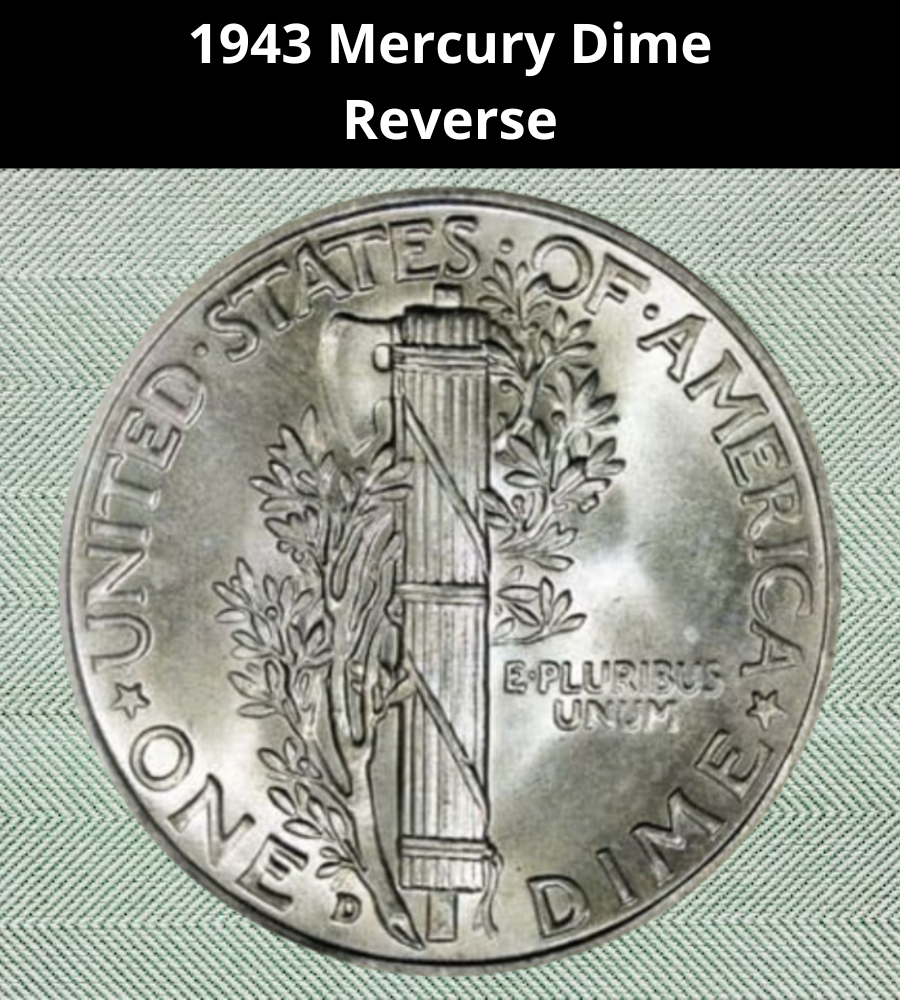
Weinman also designed the reverse, which carries a strong classical theme. At the center is a fasces—a bundle of sticks tied with leather straps, with an axe protruding from it—surrounded by an olive branch.
In ancient Rome, fasces were carried by lictors, attendants of magistrates, and symbolized authority and justice. On the Mercury dime, the fasces represent strength and justice, the axe war, and the olive branch peace—a deliberate blend of themes meant to express America’s values.
The inscription “UNITED STATES OF AMERICA” runs along the upper edge, while “ONE DIME” is at the bottom. These are separated by two stars. To the right of the fasces is the motto “E PLURIBUS UNUM”, meaning “From the many, one.”
Mint marks can be found just above the “E” in “ONE”:
- A “D” identifies coins from Denver.
- An “S” identifies coins from San Francisco.
- Philadelphia dimes have no mint mark.
Other Features of the 1943 Dime
Some 1943 dimes carry the special designation of “Full Bands” (FB), referring to the strike quality on the reverse. To qualify, the central horizontal bands on the fasces must be completely separated by a clear line.
Coins with the Full Bands designation are considerably rarer and command higher premiums than non-FB examples of the same grade.
1943 Mercury Dime Grading
| # | Grade |
|---|---|
| 1 | Basal State-1 |
| 2 | Fair |
| 3 | Very Fair |
| 4, 5, 6 | Good |
| 7, 8, 10 | Very Good |
| 12, 15 | Fine |
| 20, 30 | Very Fine |
| 40 | Extremely Fine |
| 50 | About Uncirculated |
| 60 | Mint State |
| 65 | Mint State |
| 70 | Mint State |
1943 Mercury Dime Value Guides
1943 No Mint Mark Dime Value (Philadelphia)

The Philadelphia Mint struck nearly 192 million dimes in 1943, making it the largest producer that year. According to PCGS estimates, only about 10,000 examples survive today across all grades.
- A coin graded XF45 (Extremely Fine) is worth about $5.
- In Mint State (MS60), values start at $11–$12.
- Full Band (FB) designations exist only on higher-grade coins. For example, an MS61 FB dime is valued around $20, compared to $12 for a non-FB coin.
- At MS65, prices rise to $45 without FB and $65 with FB.
- Exceptional grades command huge premiums:
- MS67+ FB: ~$1,075
- MS68: ~$7,250
- MS68+ (finest known, only 2 coins): ~$13,500 each
1943 D Dime Value (Denver)
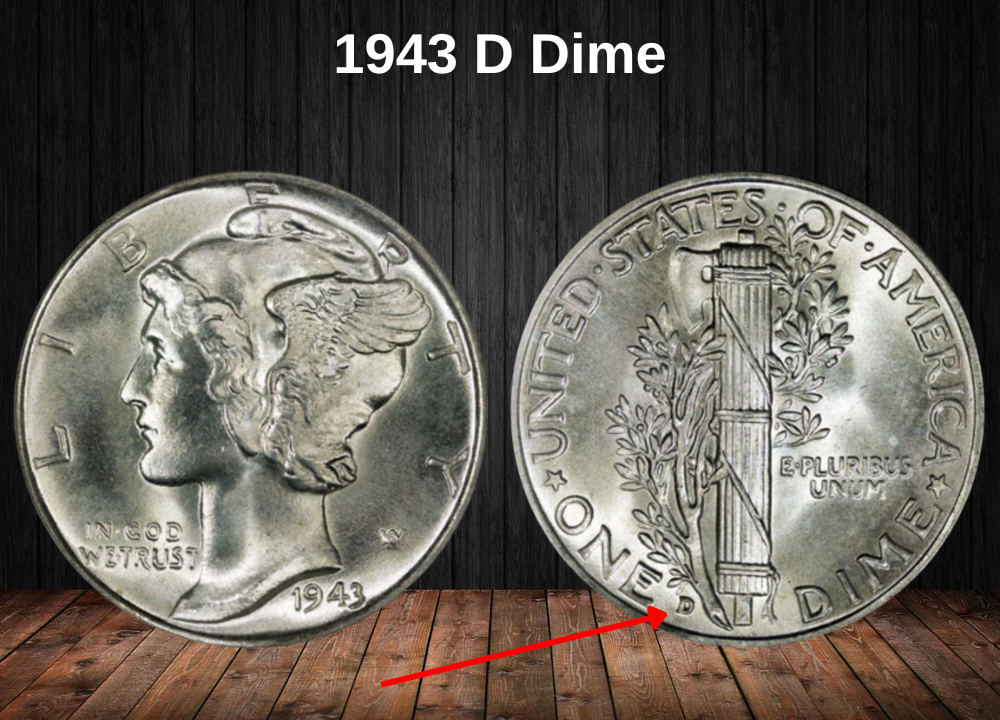
The Denver Mint struck about 95 million dimes, less than half of Philadelphia’s output. Yet surprisingly, more Denver coins have survived—PCGS estimates 20,000 across all grades.
- Circulated values are nearly identical: $5 (XF45) and $12 (MS60).
- With Full Bands, an MS60 FB dime is worth around $15.
- At the highest grades, Denver coins can be scarcer than Philadelphia pieces:
- MS68 (non-FB): ~$1,100 (only one certified)
- MS68 FB: ~$1,300 (over 60 examples certified, so less scarce than Philadelphia FBs).
- Top quality MS68+ Denver dimes are valued at about $14,000.
1943 S Dime Value (San Francisco)
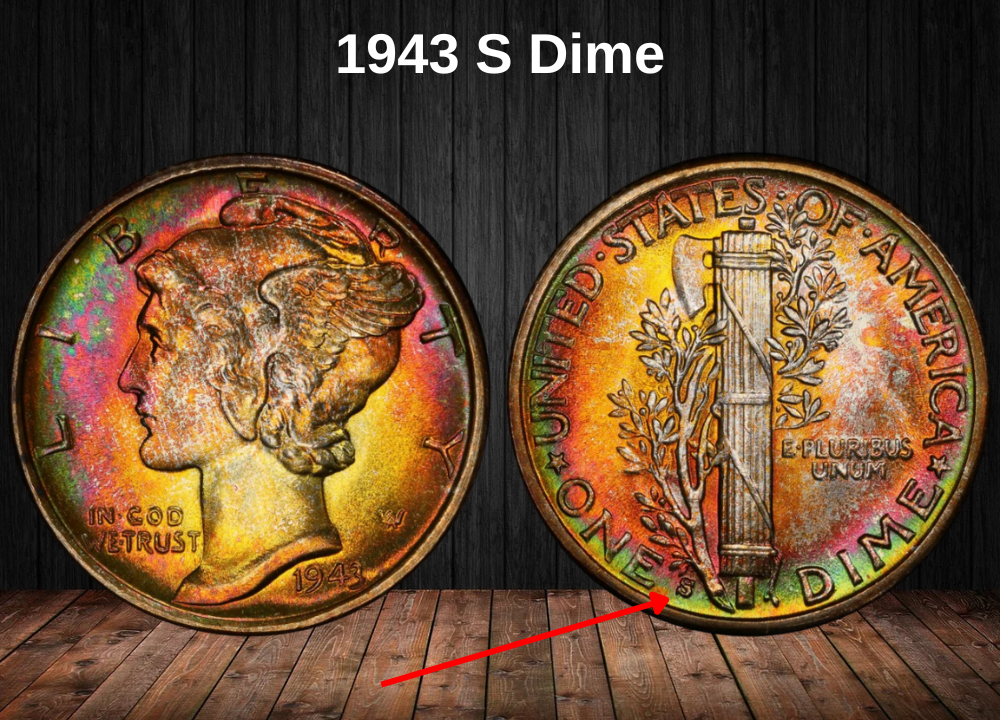
The San Francisco Mint struck over 60 million dimes in 1943. These coins carry the “S” mint mark above the “E” in ONE on the reverse.
- Circulated values are similar to other mints: $4 (G3) to $10 (AU58+).
- Mint State coins (non-FB) range from $12 (MS60) up to $950 (MS68).
- Full Band dimes are significantly more valuable:
- MS62 FB: ~$30
- MS68+ FB: ~$9,500 (only one certified)
- Rarest of all are the “Full Band, Prooflike” 1943-S dimes. No official proofs were struck in 1943, but a small number of San Francisco coins show a prooflike finish.
- Values range from $100 (MS65 PL FB) to $9,500 (MS68+ PL FB), making them among the most coveted Mercury dimes.
Rare 1943 Mercury Dime Error List
1943-S Mercury Dime, Broadstruck
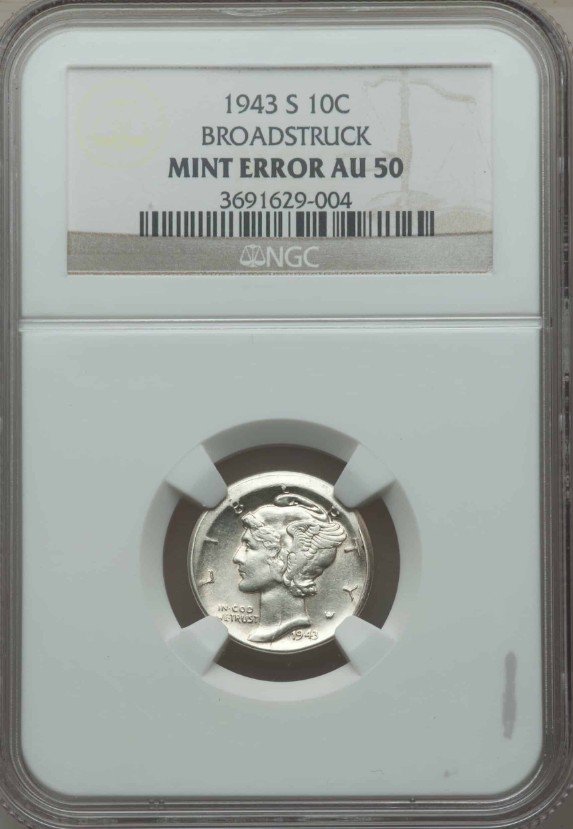
A broadstruck error happens when the planchet – the blank metal disc – is not properly secured by the collar during striking. Without the collar holding it in place, the metal expands outward, leaving the coin larger than normal with a flat, featureless border.
One known 1943-S Mercury dime was broadstruck, showing a wide blank area on the right side of the coin. Despite the minting mishap, the piece was in excellent condition. It was graded MS64 Full Band (FB) by NGC and later sold at auction for $120.
1943-S Re-punched Mint Mark (RPM)
Another rare error from the San Francisco Mint in 1943 is the re-punched mint mark (RPM). Under magnification, you can see the faint shadow of a second “S” underneath or beside the primary mint mark.
This variety is cataloged as FS-501 and carries a nice premium over regular strikes:
- MS63 example: ~$250
- MS65+ (highest grade known): up to $485
Collectors actively seek RPMs, as they represent visible mistakes in the minting process and are harder to come by.
Where to Sell Your Dime Coin?
Now that you know the value of your dime, the next step is deciding where to sell it. There are several trusted options—both online and in person—that can help you get the best price depending on your coin’s rarity and condition.
To see the full list of recommended places, along with their advantages and disadvantages, check our complete guide on where to sell your dime coins.
FAQ about the 1943 Mercury Dime Value
1. Why is the 1943 dime called a “Mercury dime”?
The 1943 dime is popularly known as the “Mercury dime” because Liberty wears a winged cap that resembles the Roman god Mercury. However, the design actually depicts Lady Liberty, not Mercury.
2. What is the metal composition of the 1943 Mercury dime?
All 1943 Mercury dimes were struck in 90% silver and 10% copper, giving them an actual silver weight (ASW) of about 0.0723 troy ounces.
3. Where were 1943 Mercury dimes minted?
They were produced at three U.S. Mint facilities:
- Philadelphia (no mint mark)
- Denver (“D”)
- San Francisco (“S”)
4. How much is a 1943 Mercury dime worth today?
- Circulated condition: around $3–$6 depending on grade.
- Mint State (MS60–MS65): $12 to $65.
- Gem condition with Full Bands (MS67+): can reach $7,000–$15,000, depending on rarity and strike.
5. What does “Full Bands” mean on a Mercury dime?
“Full Bands” (FB) refers to sharp horizontal lines across the fasces on the reverse. Coins with this designation are more desirable and sell for significant premiums.
6. Are there any rare 1943 Mercury dime errors?
Yes. Two notable errors are:
- Broadstruck error – one example sold for $120 at MS64 FB.
- Re-punched Mint Mark (RPM) “S” – values range from $250 in MS63 up to $485 in MS65+.
7. What is the highest recorded auction price for a 1943 dime?
The most valuable examples are Philadelphia Full Band dimes in MS68+, which have been valued at $13,500–$15,000.
8. Should I get my 1943 Mercury dime graded?
Yes, if your coin appears uncirculated or has strong details. Grading by PCGS or NGC can confirm whether it qualifies for the Full Bands designation, which dramatically increases its value.


